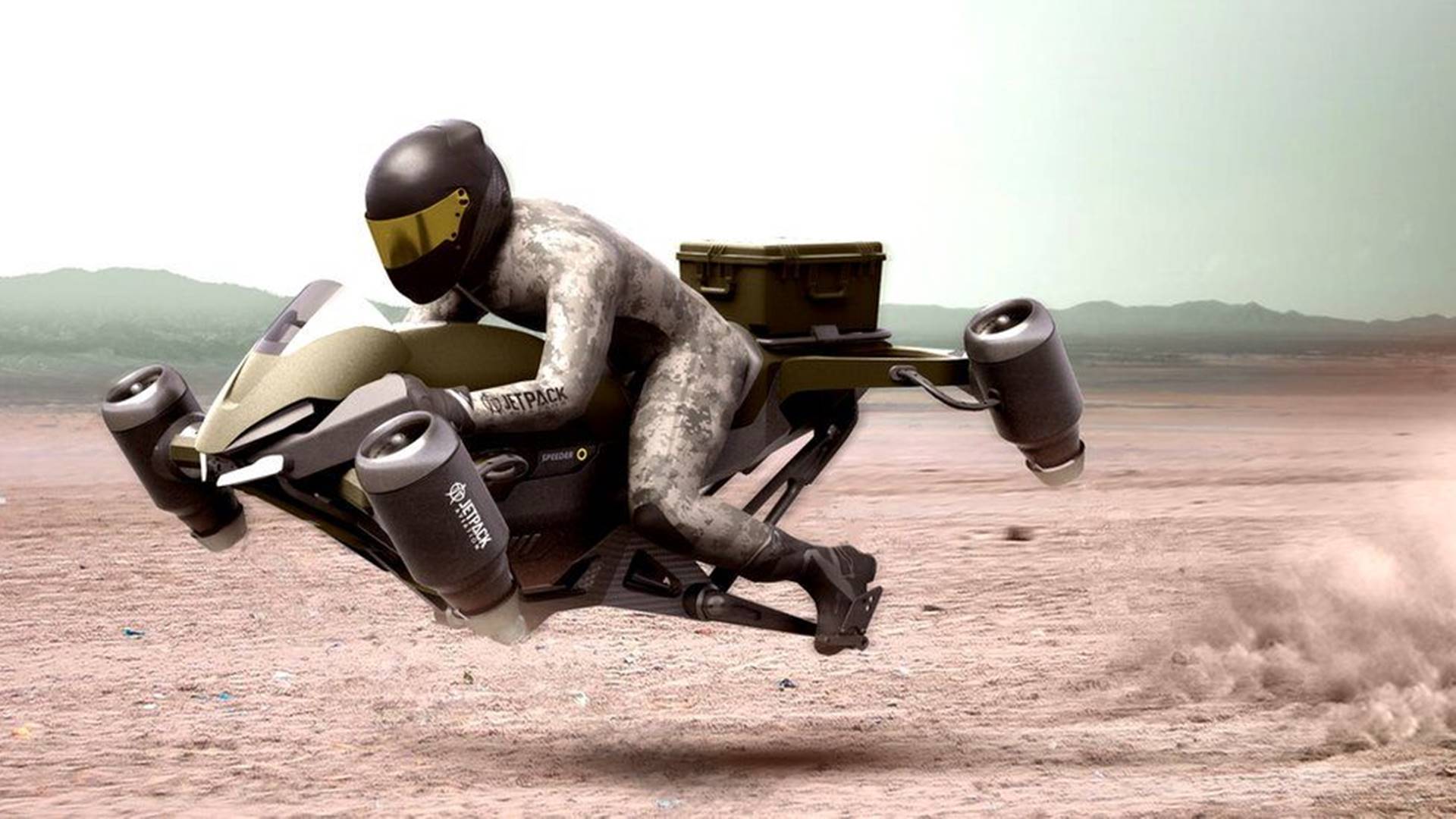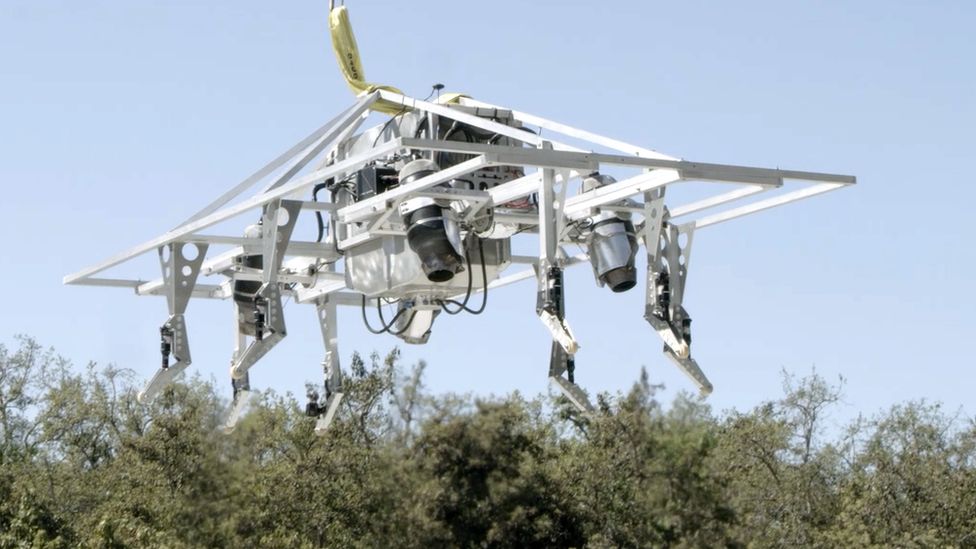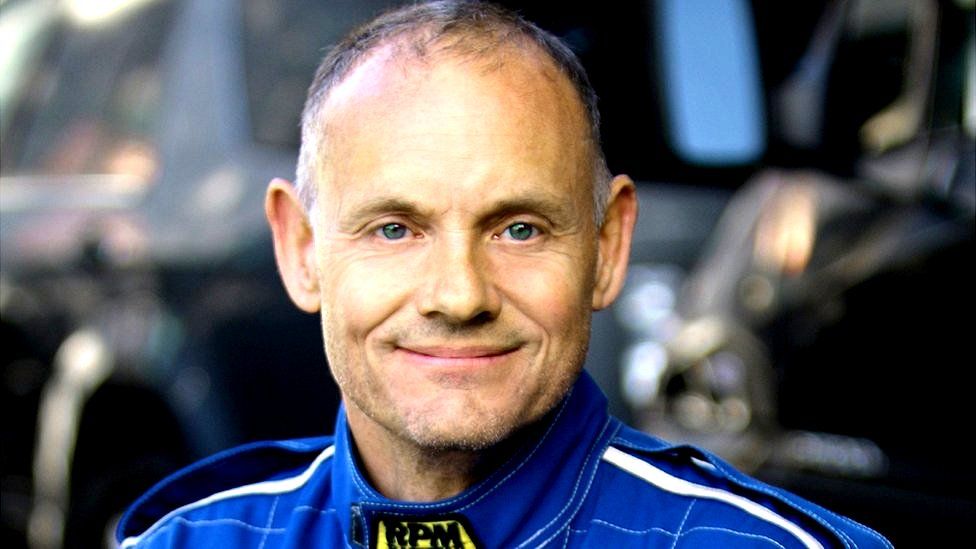At around the age of 12, David Mayman tried to build a helicopter out of fence posts and an old lawnmower

Needless to say, it did not go well. His contraption didn’t fly and he was made to fix the fence.
“I was brought up in a way that I guess challenged me scientifically… I was always told that nothing’s impossible,” he says.
Perhaps he got a bit ahead of himself during his childhood in Sydney, but as an adult, Mr. Mayman has built innovative machines that really do fly.
Elon Musk’s SpaceX to split its private stock 10-for-1
After selling his online listings business Mr. Mayman developed a jetpack, which in 2015 he flew around the Statue of Liberty.

But, since 2018, he has been working on a different kind of project, one he thinks will have more commercial opportunities.
Called the Speeder, his new machine will be like a flying motorbike. It will take off vertically, fly at high speeds, but be compact enough to fit in the back of a pick-up truck.
The Speeder is just one of many flying machine projects underway at the moment.
There are currently hundreds of EVTOL (electric vertical take-off and landing) aircraft in development, with engineers hoping to create a new era of cheap, quiet air transportation.

But Mr. Mayman’s machine is very different from those aircraft. Instead of being powered by batteries and electric engines, his Speeder uses four small jet engines, which run on aviation fuel.
That might seem like a step backward in technology, but for the customers, Mr. Mayman has in mind, only liquid fuel will do.
He says the military, emergency services, and the offshore energy industry want a fast, compact aircraft that can carry significant weight.
For that, you need jet fuel, as it stores 20 times the energy of batteries for a given weight. Or in other words, to supply the power needed, batteries would be too heavy.
“If you want to carry a certain payload, and you want that aircraft to have a certain range and certain speed, the only way to do that with current technology is, with turbine engines.” Mr. Mayman explains.

The Speeder idea emerged from work with the US Navy, which was interested in a jetpack for use by the Navy’s special forces, the Seals.
“As is so often the case in aviation, you start with one set of specifications, and fairly quickly, you end up with an entirely different set of specs,” he explains.
“They initially wanted something that would carry a payload of 210 pounds (95kg), not far into the project that morphed to nearly 300 pounds (135kg). And they wanted it to be possible to train somebody literally in 10 minutes,” Mr. Mayman says.
None of that was possible with his existing jetpack product – something bigger and easier to fly would be needed, so the Speeder project was born.
Some of the jetpack technology was helpful on the new project, but much of it had to be developed from scratch.

To simplify things, while on the jetpack the direction of thrust is controlled mechanically by the pilot on the Speeder the angle of the four jet turbines is controlled by an electronic flight control system.
The key part of that system is bespoke software that understands the physics of the four very powerful jets. This means that when the pilot lifts off or turns, the Speeder can angle its jets to make that happen.
Mr. Mayman says that owners will not necessarily need a pilot’s license, as the Speeder’s flight control systems are doing much of the work to keep the aircraft steady.
“It’s effectively AI (artificial intelligence) – if you want to call it that – that understands what the vehicle is going to need… so it can start instructing the engines to be spooling up or spooling down,” says Mr. Mayman.

It’s that aspect of artificial intelligence that interests Sajal Kissoon, a research assistant in gas turbine technology at Cranfield University’s aerospace center.
“The important enabler for this [the Speeder] is the use of AI to assist control. This, in itself, is a very exciting advancement,” she explains.
“What if the Speeder faces unusual weather conditions, or unusual wind conditions, or an unusual maneuver by the pilot? I think AI would be essential to assist control,” Ms. Kissoon adds.
Mr. Mayman is hopeful that the Speeder will eventually be used to transport cargo. Piloted by remote control, or autonomously he thinks there will be demand, particularly from the armed forces or emergency services.
With a top speed of around 200mph and a flight time up to 60 minutes, Mr. Mayman says it could get essential supplies for the military, or emergency services, very quickly to where they need to be.
In cargo mode, where it is piloted remotely, it will be able to go even faster, perhaps at 500mph, and carry 450kg.
Being compact and able to fly in all sorts of weather conditions, he thinks it has the potential to be more versatile than a helicopter.

But before you get too excited at the prospect of ditching the bus and hopping on a Speeder to work, Mr. Mayman says it is unlikely to fly through cities.
“We make noise, we’re incredibly powerful, we’re incredibly small. I don’t think there’s necessarily a need within the urban air mobility space for an aircraft that can be the size of your kitchen table.”
Crucially, a lot more testing still needs to be done before the Speeder is delivered to any customer. A third full-size prototype (called the P2) is being prepared for flight at the test range about two hours east of Los Angeles.
There will be enough space there for the Speeder to be put through its paces.
A key phase will also come late next year when the company hopes to start the certification process. The company estimates that will take 12 months.
If all goes to plan, the Speeder might be available for sale in late 2024 or 2025, although the military might be able to start flying it earlier, according to Mr. Mayman.
Unsurprisingly, all of his engineers want to be the first to fly the machine out in the desert, but Mr. Mayman is saving that thrill for himself.
“It’s pretty much the main reason they work here. So, I have got a long queue of folks waiting to test fly this thing. But I’ll be pulling rank,” he says.
And hopefully for Mr. Mayman, this time he will not have to fix any fences.
Napomena o autorskim pravima: Dozvoljeno preuzimanje sadržaja isključivo uz navođenje linka prema stranici našeg portala sa koje je sadržaj preuzet. Stavovi izraženi u ovom tekstu autorovi su i ne odražavaju nužno uredničku politiku The Balkantimes Press.
Copyright Notice: It is allowed to download the content only by providing a link to the page of our portal from which the content was downloaded. The views expressed in this text are those of the authors and do not necessarily reflect the editorial policies of The Balkantimes Press.
